Oral History Center
Science in Context: The UC Berkeley School of Public Health Oral History Project
As we know from our daily experience of the COVID-19 pandemic, public health is a political and cultural flashpoint in American society, as it has been since its emergence as a field of study and area of state authority in the 19th century. Whereas conventional biomedicine situates illness squarely inside the human body — a matter of damage to or malfunction of organ systems — public health looks outward, to the communication of diseases among populations and to the social factors that contribute to health or illness. Public health practitioners look at everything from the aggregate of individual human choices, such as smoking, to larger, deeper historical structures in society, such as the impact of systemic racism on health outcomes. Is it the government telling you how you or your children should behave, or is it science-based advice to help reduce rates of illness, harm, or death in society? Public health is science in political context like few other fields of research.
Well over a decade ago, the School of Public Health at UC Berkeley began to take stock of this positioning and reflect on how a teaching and research institution could better respond to the challenges of science in context. This set of interviews emerged from an effort to document the recent history and institutional evolution of the school. Steve Shortell, who was dean of the school from 2002 until 2013, wanted to chronicle the foundation and growth of the On-campus/Online Professional MPH (master’s of public health) Program; the reinstitution of the undergraduate major in public health; the development of an office of diversity; a graduate program in public health practice and leadership; and a center for health leadership, formerly known as the Center for Public Health Practice and Leadership and currently known as RISE. Dean Shortell also wanted to feature some key leaders associated with these developments.
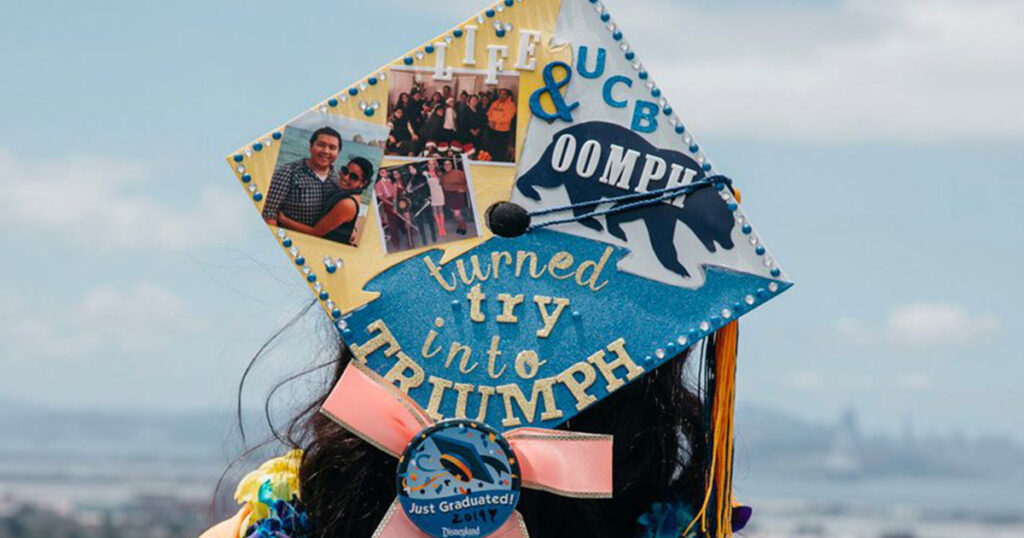
There are three interviews with Dean Shortell that provide the context for the institutional changes during this period, as well as explorations of his career in health management research. Executive Associate Dean Thomas Rundall was also interviewed about multiple initiatives, including his leadership of the graduate programs in health management and co-directorship of the Center for Lean Engagement and Research in Healthcare (CLEAR). Jeffrey Oxendine was interviewed about his role as co-founder and associate dean of the Center for Public Health Practice and Leadership, which began in 2008. Another feature of this oral history project was to explore the reinstitution of the undergraduate major in public health in 2003. Dr. Lisa Barcellos was interviewed in part about her leadership of that program and her research on the genetic and environmental factors involved in autoimmune disease.
There is also a set of interviews surrounding the establishment and growth of the online MPH program. Dr. Nap Hosang was the first director of the hybrid master’s of public health program, and he discusses the unique features of the program’s design, particularly with respect to accessing a diverse and unique pool of student talent, which contributed to the program’s success in subsequent years. Dr. Deborah Barnett was interviewed partly about her capacity as the successor and current leader of the program and as chief of curriculum and instruction. Alberta (Abby) Rincón recounted the history of her time as director of diversity and the foundation of the DREAM (Diversity, Respect, Equity, Action, Multiculturalism) office in the school. In her interview, chair of the Division of Community Health Sciences Dr. Denise Herd discusses the history of research in health disparities and the social determinants of health — a subject that is raised in many of the interviews — and her participation in the campus-wide Othering & Belonging Institute. Finally, Dr. Art Reingold was interviewed about his several decades as director of the Division of Epidemiology, the online MPH program, and teaching in the time of COVID.
If the field of public health is broadly defined as the study of health at the population level, this set of interviews reveals the broadest themes of health in context: the environment that shapes the expression of genes, the factors that lead to the nourishment or deprivation of bodies and minds, the factors that determine who gets to study or teach public health, the factors that shape the delivery of health care, and the contexts that shape the interactions between human bodies and other organisms and pathogens. The overarching story is about how these individuals studied, improved, and optimized institutional attention to these larger contexts, contributing to one of the most extraordinary public health programs in the country.
Read more from the individual interviews below:
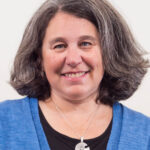
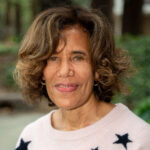
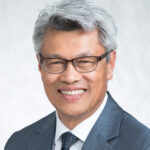
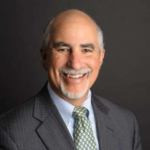
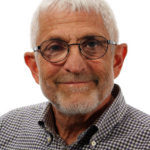
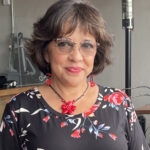
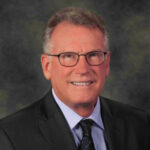
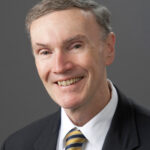
Stanton Glantz: Putting Cardiovascular, Epidemiological, Economic, Political, and Policy Research into Action at UC San Francisco and Beyond
Today we announce the publication of the Oral History Center’s interviews with Dr. Stan Glantz. Dr. Glantz received his doctorate in applied mechanics from Stanford University before embarking on a multi-decade career at UC San Francisco. He contributed engineering concepts to cardiovascular research, biostatistics to epidemiology, and economics to the study of second-hand smoke and policymaking to regulate second-hand smoke, among many other research projects. The oral history explores his political and policy activism, the history of the clean indoor air movement, and his commitments to science and public health, in particular his long struggles with the tobacco industry and efforts to make UC San Francisco a world center for research into second-hand smoke, nicotine addiction, and the broader social determinants of health. His service to UC San Francisco and the University of California is also explored, in particular, his research and advocacy for policy changes on issues ranging from the rights of adjunct faculty to state funding of the UC system. These interviews showcase Glantz’s applied epistemology, his continual reflection on how knowledge is produced and shaped through formal and informal practices for arriving at scientific truth.
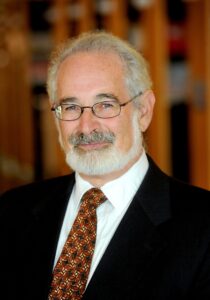
Oral History Center Releases Life History of San Francisco Supervisor and Education Advocate Norman Yee
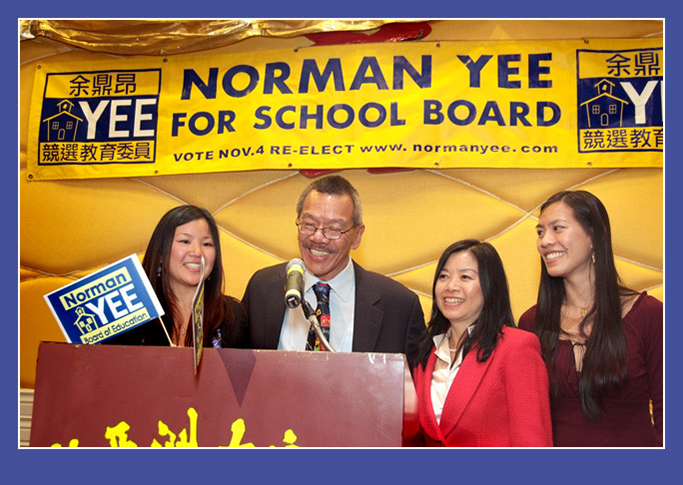
“I am proud to be a Chinatown kid who grew up to be of consequence at City Hall for my own community, and for the City I love. I hope one day my story will be one that creates a history that affords others new futures.” — Norman Yee
The UC Berkeley Oral History Center is proud to announce the release of Norman Yee: Serving the People of San Francisco, From Chinatown to the Board of Supervisors. For most residents of San Francisco, Yee needs no introduction. He is a former member of the Board of Education and Board of Supervisors, elected positions in which he served for sixteen years. Before politics, we worked for over two decades as an innovative facilitator and advocate of multicultural education in San Francisco.
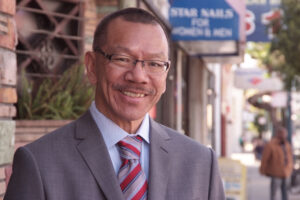
Born and raised in San Francisco’s Chinatown, Yee grew up within a large extended family and spent much of his childhood and teenage years working at his parents’ grocery store. He attended Galileo Academy of Science and Technology, and upon graduation continued his education at City College of San Francisco and UC Berkeley, where he earned a bachelor’s degree in civil engineering. Yet, his career as an engineer barely lasted six months. Although he had a mind for mathematics, his heart drew him to education and the overlooked needs of the children in Chinatown. Leaving his position at Cal OSHA, he volunteered at the Chinatown YWCA, where he worked with the neighborhood’s youth and became involved in several projects aimed at expanding the resources and programs available to children and families in the neighborhood. By 1978, he decided that early childhood education was his calling, and entered the Teacher Corps, a two year program that asks candidates to work in urban school district, in this case East Palo Alto. In exchange he would receive his Master of Arts degree in elementary education.
Yee began his career in early care and education at Wu Yee Children’s Services in Chinatown. There he helped develop one of the first curriculums in bilingual multicultural education. He also taught mixed language classes in the San Francisco School district, as well as ESL (English as a Second Language) courses at City College of San Francisco, where he played a critical role in creating unit-bearing ESL classes. Yee continued to expand the educational opportunities for immigrant and first-generation children. He was a founding member of the Alice Fong Yu Alternative School, the country’s first Chinese immersion public school. He also expanded both the resources and services offered by Wu Yee Children Services, and proved pivotal in the creation of San Francisco’s Public Education Enrichment Fund, a third of which is designated for early childhood programs and education.

Yee entered public office in 2004, marking a start to a political career that would see him serve two terms on the San Francisco Board of Education and two terms on the San Francisco Board of Supervisors. In both positions, he continued to be an unwavering advocate for early childhood education and public services for underrepresented populations in the city. He co-authored Proposition C in 2018, which created universal childcare in San Francisco, as well as Proposition W, which made City College free for San Francisco residents. After being severely struck by a car in 2005, he sponsored the Vision Zero initiative to increase pedestrian safety. He also successfully sponsored initiatives for police reform and one of the city’s most progressive senior housing developments. In 2010, he was elected president of the Board of Supervisors, and played a critical role in helping guide San Francisco through the COVID-19 pandemic.
Throughout his multiple careers, Yee confronted each challenge with hope, determination, and an unwavering commitment to the city and community he sought to serve. The Oral History Center is thrilled to bring his inspiring and untold story to the public.
Find this interview and all our oral histories from the search feature on our home page. You can search by name, keyword, and several other criteria.
About the Oral History Center
The Oral History Center of The Bancroft Library preserves voices of people from all walks of life, with varying political perspectives, national origins, and ethnic backgrounds. We are committed to open access and our oral histories and interpretive materials are available online at no cost to scholars and the public. You can find our oral histories from the search feature on our home page. Search by name, keyword, and several other criteria. Sign up for our monthly newsletter featuring think pieces, new releases, podcasts, Q&As, and everything oral history. Access the most recent articles from our home page or go straight to our blog home.
UC Berkeley Oral History Center Launches California Cannabis Series and Partners on Ground-Breaking Project
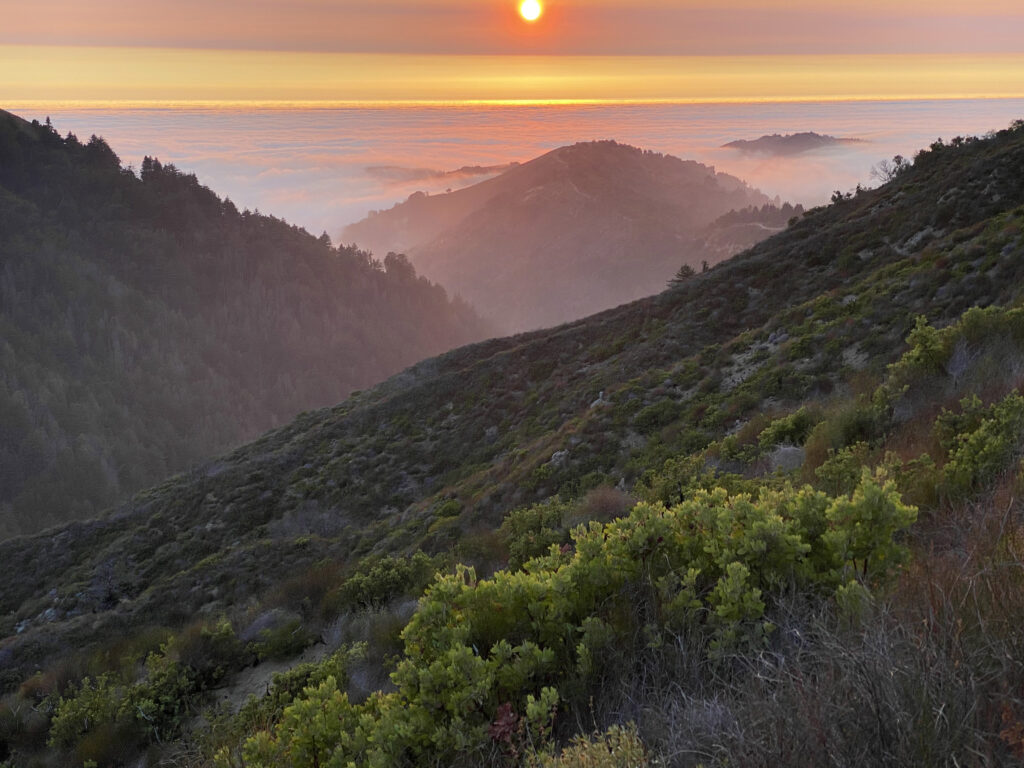
For over 150 years, residents and visitors alike have not run short of reasons to support the claim, “There’s no place like California.” And since the 1960s, that claim has been echoed—albeit in whispers—among cannabis circles around the globe. Bestowed with rich soils and a unique Mediterranean climate, counterculture-turned-farming communities in California pioneered cultivation and breeding practices that would revolutionize cannabis, and in the process, give the Golden State near mythic status. Strains such as Haze, Kush, Blueberry, Purps, Skunk, and SAGE became legendary, as did the California regions that produced them: Big Sur, Santa Cruz, and the famed Emerald Triangle of Mendocino, Trinity, and Humboldt Counties. For a plant whose history spans millennia, such developments were more than just a feat; they proved to be a game changer. By the dawn of the twenty-first century, the innovations of California cultivators had created the very seedbed upon which the modern world of cannabis would flourish.
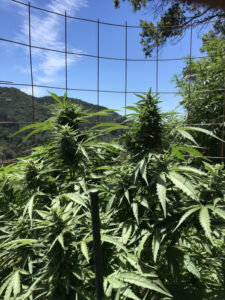
The UC Berkeley Oral History Center (OHC) is proud to announce the launch of the California Cannabis Oral History Series, and the release of the series’ inaugural interview, Oliver Bates: Reflections on Over Three Decades in the Cannabis Industry. Created by OHC Historian Todd Holmes, the new oral history series seeks to capture the untold history of the state’s cultivating communities and finally situate cannabis within the historical record. The Center is also thrilled to announce that Holmes will add nearly a hundred hours of interviews to this important series over the next two years as part of a multi-institutional research team studying legacy genetics among California cannabis communities. Supported by a $2.7 million grant from the California Department of Cannabis Control, the project will be conducted within a community-based participatory research framework that combines oral histories, ethnographic field studies, community outreach, genetic sequencing, and the creation of community herbariums.
An Untold Legacy
The significance of documenting the history of California cannabis is hard to overstate, as it has long been relegated to the shadows. Designated an illegal substance in 1937 with the passage of the Marijuana Tax Act, cannabis cultivation was forced to take root in the dark soils of prohibition—a landscape that legally branded farmers as outlaws, and their crop as contraband. Thus, unlike other agricultural sectors, cannabis had no state organizations to provide support to growers, no venues to share the latest methods and innovations. In fact, most cultivators lived and operated in near seclusion, which proved an important survival tactic amid America’s escalating War on Drugs. The craft of cultivation, therefore, came to resemble a highly guarded secret among cannabis communities, one that was passed down over the decades from one generation to the next. In a touch of irony, cannabis also arose during this same time to become—in terms of estimated sale revenue—the state’s number one cash crop. California voters finally began to pull back the veil of prohibition in 1996 with the passage of Proposition 215, which legalized cannabis for medical use. Twenty years later, voters fully legalized cannabis in the state with Proposition 64. For the first time in modern history, California cannabis farmers were able to fully step out of the shadows; and with them, came the untold history of their craft.
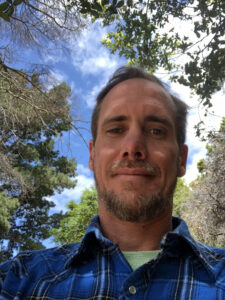
The oral history of Oliver Bates represents the OHC’s initial step toward documenting this overlooked history. President of the Big Sur Farmers Association and a thirty-year veteran of the cannabis industry, Bates began growing on California’s Central Coast in his teens, applying the methods he learned from working with elder farmers in the Big Sur community. Upon the passage of Proposition 215, he moved his small operation from the secluded mountains of Big Sur to a sizeable open farm in Monterey County, where he was among the region’s earliest cultivators of medical cannabis. The medical boom soon led him north to the border area of Mendocino and Humboldt Counties—the epicenter of the famed Emerald Triangle. There he worked in the historic Spyrock community with some of the top growers in the industry, helping to develop the new techniques and strains needed to meet the ever-changing demands of the evolving cannabis market.
“It was so dangerous and so tight knit…if you were lucky enough to know a grower, and then worked very hard for that grower, maybe you were lucky enough to get a few tricks so you didn’t have to spend the next ten to twenty years falling on your face to get it right. Because it’s a very finicky plant if you don’t know what you’re doing. It’s very sensitive. It’s hard. People think and say, ‘It grows like a weed.’ Not true.”
His experience at Spyrock expanded and refined his skillset as a cultivator. It also introduced him to the next chapter of his career: indoor hydroponics. For a grower who strove for perfection with every plant, Bates found the potential of indoor hydroponics hard to resist. Outdoor cultivation requires a farmer to work with the natural environment to produce the best possible product—a factor that explains California’s preeminence in cannabis cultivation. Indoor cultivation allows growers to create the optimal environment, and with it a greater chance for a more optimal product. Bates quickly took to the new venture, opening large indoor operations in Oregon and Colorado before returning to California to run one of the largest hydro operations in Santa Cruz County. And in each location, he increased both scale and variety to keep apace the shifting currents of the medical cannabis market. For a farmer who began growing in the secluded Santa Lucia Mountains of Big Sur, the developments he had both witnessed and helped advance in the cannabis world were staggering. The medical market now came to include hundreds of cannabis strains, powerful concentrates, and an ever-growing assortment of THC products.
In 2012, Bates returned to Big Sur with the intention of getting back to a simpler practice. Bothered by the environmental excesses of indoor growing and the commercialism of the cannabis market, he yearned to return to his roots by growing legacy cultivars in the community he called home. He also wished to be of service to his fellow farmers. Upon the passage of Proposition 64 in 2016, Bates helped found the Big Sur Farmers Association, a mutual benefit nonprofit that works to support, protect, and advance the rights of cannabis cultivators in the region.
Partnering on Ground-Breaking Study
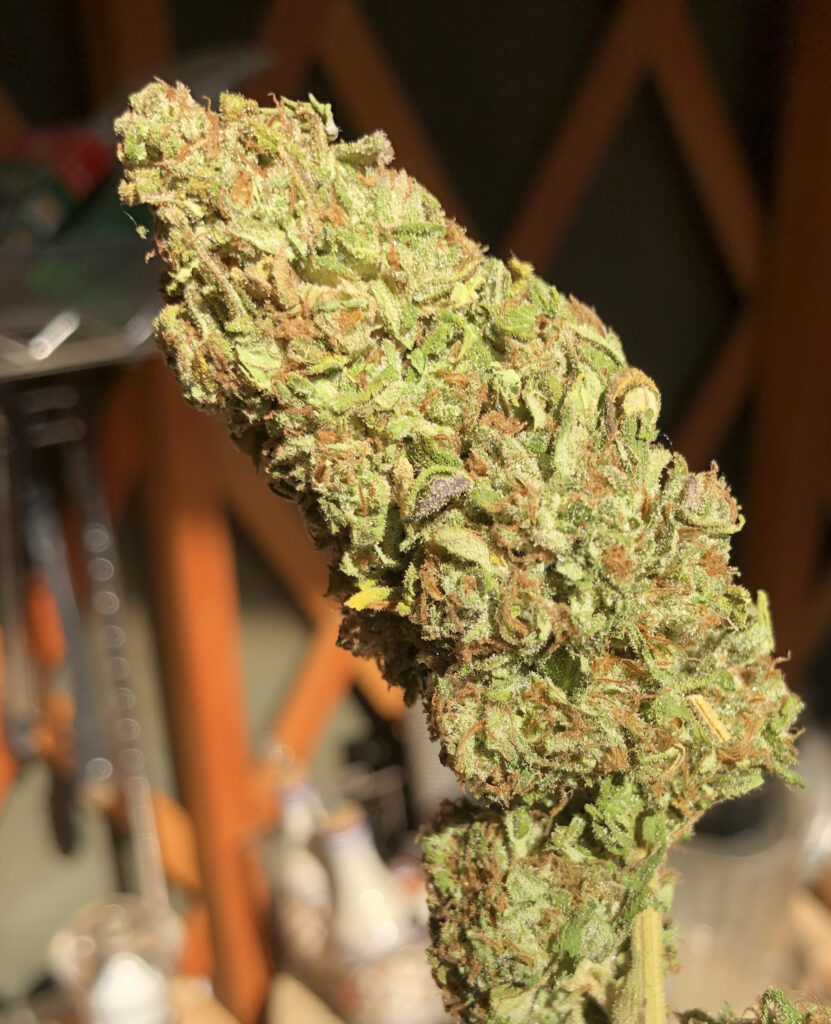
The oral history of Oliver Bates stands as a unique and valuable piece within the large mosaic of California cannabis—a picture that the OHC and its institutional partners hope to bring into better focus through their research project on legacy cannabis genetics. Supported by a $2.7 million grant from the California Department of Cannabis Control, the multi-institution research team will identify, document, and help preserve the history and diversity of the state’s legacy cannabis genetics and the communities that steward them. In many respects, the project stands as the first of its kind. First, the study will be conducted within a community-based participatory research framework, an approach where community members, organizational representatives, and academic researchers operate in partnership on all aspects of the research process. The community organizations partnered on this study are the Origins Council (OC), a California nonprofit public policy and research institute serving California’s historic rural cannabis farming regions and the Cannabis Equity Policy Council (CEPC), a statewide equity advocacy organization representing the interests of Black, Indigenous, and people of color (BIPOC) in urban communities.
Second, the study is being collaboratively led by a multidisciplinary team of researchers from across the state. The research team includes: Principal Investigator Dr. Dominic Corva, assistant professor of Sociology and program leader of Cannabis Studies at California State Polytechnic University, Humboldt; Co-Principal Investigator Genine Coleman, executive director of Origins Council; Co-Principal Investigator Dr. Rachel Giraudo, associate professor of Anthropology at California State University, Northridge; Co-Principal Investigator Dr. Todd Holmes, historian and associate academic specialist with the Oral History Center of The Bancroft Library, University of California, Berkeley; Co-Principal Investigator Dr. Eleanor Kuntz, co-founder of Canndor, the world’s first cannabis herbarium, and co-founder and CEO of LeafWorks, a genomics and plant science company.
For the Oral History Center, this project will add nearly 100 hours of oral history interviews to the California Cannabis series, making this collection the largest of its kind on cannabis history in the United States. These firsthand accounts will document the history of cultivation communities in the legacy regions of California’s Central and North Coasts as well as urban cultivators in cities such as Los Angeles, San Jose, and Oakland. Moreover, when paired with the other work of the research team—like the genetic sequencing and community herbariums produced by Dr. Kuntz at LeafWorks, and ethnographic fieldwork Dr. Corva at Cal Poly Humboldt—the oral histories will play a critical role in the official documentation of California’s world renown cannabis genetics. We are excited about the future of this project and the impact it will have for the scholars and policymakers of today, and those of tomorrow.
Watch The Short Film
The oral history interviews of Oliver Bates served as the basis for the short film, The Legacy of Big Sur Cannabis. Created and produced by OHC historian Todd Holmes and his partner Heidi Holmes, the film was recently featured in the Cannabis Exhibition at the 2023 California State Fair.
About The Oral History Center
The Oral History Center of The Bancroft Library preserves voices of people from all walks of life, with varying political perspectives, national origins, and ethnic backgrounds. We are committed to open access and our oral histories and interpretive materials are available online at no cost to scholars and the public. You can find our oral histories from the search feature on our home page. Search by name, keyword, and several other criteria. Sign up for our monthly newsletter featuring think pieces, new releases, podcasts, Q&As, and everything oral history. Access the most recent articles from our home page or go straight to our blog home.
Oral History Center Celebrates “Graduates”
Spring is a time of year when things begin anew. Flowers bud new petals, days have new length, and college graduates embark on new careers. It’s also a time when we at the Oral History Center celebrate an exciting phase of our narrators’ lives: a new life in our archive, where their story will live on in perpetuity. Not only can a narrator’s loved ones, friends, and colleagues access their interviews for years to come, students, researchers, and scholars can learn something about a time and a place, illuminating an aspect of history they might not have previously considered.
One way the UC Berkeley Oral History Center (OHC) likes to usher in this new phase of a narrator’s life is to have a “graduation” ceremony to honor their participation in the oral history process. Traditionally, we did this in person at the Morrison Library here on UC Berkeley’s campus, but like many things, we’ve had to adjust in the wake of the COVID-19 pandemic. Now, we like to list their names and the projects for which they were interviewed online and in our newsletter so that all those in the OHC’s community can celebrate their contributions with us from near and far.
Please join us in expressing our appreciation for our latest cohort of narrators, spanning from fall 2021 to spring 2023. We are grateful to have their voices in our collection and their stories a new part of the historical record.
We also want to thank the OHC team—Paul Burnett, David Dunham, Roger Eardley-Pryor, Shanna Farrell, Todd Holmes, Jill Schlessinger, and Amanda Tewes—for their work in making these interviews come to fruition, along with the support from our student employees, who are a valuable part of our process: Max Afifi, Mollie Appel-Turner, Hue Bui, Mina Choi, William Cooke, Georgia Cutter, Nikki Do, Adam Hagen, Jordan Harris, Vivien Huerta-Guimont, Ashley Sangyou Kim, Ricky Noel, Deborah Qu, Mela Seyoum, Lauren Sheehan-Clark, Joe Sison, Erin Vinson, Shannon White, Serena Williams, and Timothy Yue.
Bravo, Oral History Center Class of 2023!
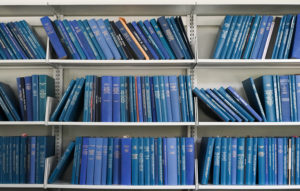
Anchor Brewing Co.
Mark Carpenter
Gordon MacDermott
Fritz Maytag
Linda Rowe
Bay Area Women in Politics
Louise Renne
Ruth Rosen
J.J. Wilson
California Business
Fred Martin
California Cannabis
Oliver Bates
California State Archives State Government Oral History Program
Wesley Chesbro
Fran Pavley
Lois Wolk
Bill Lockyer
Chicana/o Studies
Adele de la Torre
Ignacio García
East Bay Regional Park District
Ira Bletz
Ginny Fereira
Neil Havlik
Carol Johnson
Doug McConnell
Ruth Orta
Bethia Stone
Jeff Wilson
Mark Taylor
Mae Torlakson
Tom Torlakson
Will Travis
Nancy Wenninger
Environment/Natural Resources
Mary D. Nichols
Getty Research Institute’s African American Art History Initiative
Marion Epting
Maren Hassinger
Leslie King-Hammond
Thaddeus Mosley
Sylvia Snowden
William T. Williams
Vickie Wilson
Richard Wyatt
Getty Trust
Jerry Podany
Uta Barth
Tobey Moss
Katrin Henkel
Japanese American Intergenerational Narratives
Miko Charbonneau
Bruce Embrey
Hans Goto
Patrick Hayashi
Jean Hibino
Mitchell Higa
Roy Hirabayashi
Carolyn Iyoya Irving
Susan Kitazawa
Naomi Kubota Lee
Ron Kuramoto
Jennifer Mariko Neuwalder
Kimi Maru
Lori Matsumura
Alan Miyatake
Margret Mukai
Ruth Sasaki
Steven Shigeto Sindlinger
Masako Takahashi
Peggy Takahashi
Nancy Ukai
Hanako Wakatsuki-Chong
Rev. Michael Yoshii
Moore Foundation
Edward Penhoet
Kenneth Siebel
James C. Gaither
National Park Conservancy
Greg Moore
Sierra Club
Rhonda Anderson
Bruce Nilles
Verena Owen
Rita Harris
Resources and Planning
Anders Hauge
San Francisco Politics
Norman Yee
University History
Doris Sloan
Carolyn Merchant
Randy H. Katz
“Doris Sloan: Geologist, Educator, and Environmental Activist,” oral history release
New oral history: Doris Sloan
Video clip from Doris Sloan’s oral history on living in the Bay Area, on deep time, and on thinking like a geologist:
Doris Sloan is a geologist and paleontologist who earned her PhD at UC Berkeley and who taught, wrote, and engaged in environmental activism and education throughout the Bay Area, across California, and beyond. Sloan and I recorded nine hours of her then 92-year life history at her home in Berkeley, California, in May 2022. Our four recording sessions resulted in a 162-page oral history volume that includes an appendix of photographs with family as well as documents from her efforts in the early 1960s to stop PG&E’s construction of a nuclear power plant atop Bodega Head, under which runs the seismic San Andreas fault. Today, the coastal outcrop of Bodega Head is preserved as part of California’s scenic 17-mile-long Sonoma Coast State Park.
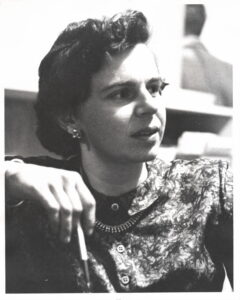
to Preserve Bodega Head and Harbor (NCAPBHH).
Sloan’s involvement in the “Battle for Bodega Head” helped inspire her later career as a geologist and teacher—a career she began by returning to graduate school as a mother in her early forties with children still at home. Sloan overcame numerous challenges, including gender discrimination in what were then male dominated departments and academic fields, to earn her MS in Geology in 1975 and her PhD in Paleontology in 1981. Her dissertation was an ecostratigraphic thesis on the sedimentary fossils of tiny creatures that once lived the San Francisco Bay. For many years, Sloan taught research-driven senior seminars in Environmental Science at UC Berkeley as well as geology courses for UC Extension. She lectured on travel excursions and field trips around California and across much of the Earth. Sloan became a board member with Save the Bay and a founding member of Citizens for East Shore Parks. In 2006, she published with UC Press the popular California natural history guide, Geology of the San Francisco Region. In her rich oral history, Sloan discussed all of the above, with details on her formative childhood experiences, her environmental and anti-nuclear activism, her experiences as a female geology graduate student at UC Berkeley, as well as her diverse teaching career.
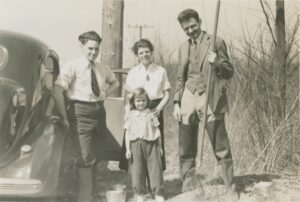
Doris Sloan was born in October 1930, in Freiburg, Germany. At age four, she and her family fled Germany after the Nazis removed her father, preeminent embryologist Viktor Hamburger, from the faculty at the University of Freiburg because of his Jewish ancestry. Her family settled in Missouri after her father secured a faculty appointment at Washington University in St. Louis. As a young girl, Sloan accompanied her father and his embryology students on field research trips to collect salamander eggs. She also shared fond memories of youthful summers working in Woods Hole on Cape Cod at the Marine Biological Laboratory. Sloan attended Bryn Mawr College from 1948 to 1951, where she began attending Quaker meetings. Upon her mother’s deteriorating health, Sloan returned to St. Louis and graduated in 1952 from Washington University with a BA in Sociology. In that same year Sloan moved to San Francisco, California, with her then-husband, with whom she had four children. In 1957, she and her young family moved to Sonoma County, where she was neighbors with Peanuts cartoonist Charles Schulz. It was there in Sonoma County where, in the interests of protecting her children from nuclear radiation and preserving the beauty of the Sonoma Coast, that Sloan began her environmental activism that would, among other experiences, inspire her later career as a geologist and teacher.
Video clip from Doris Sloan’s oral history about her role in the “Battle of Bodega Head, Part 1:
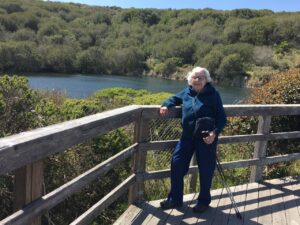
Sloan detailed her engagements in the multi-year “Battle of Bodega Head” that, in 1964, successfully stopped PG&E’s construction of a nuclear power plant on Bodega Head. After being told by an official from California’s Office of Atomic Energy Development and Radiation Protection to let go of concerns about the forthcoming nuclear plant and “leave it to the experts,” Sloan enlisted in the activist organization called the Northern California Association to Preserve Bodega Head and Harbor (NCAPBHH)—a name others created and she described as “dreamt up on a Friday night after too many beers.” The Association included an eclectic mix of anti-nuclear citizen activists that included communist chicken farmers, libertarian land owners, conservative cattle ranchers, Bodega fisherman, UC Berkeley professors, Sierra Club members, and jazz musicians and songwriters. In her role as Sonoma County Coordinator of NCAPBHH, Sloan also collaborated with an internationally recognized geophysicist and geologist named Pierre Saint-Amand. Fortuitously, on a rainy and wind-swept day, Sloan accompanied Saint-Amand on a clandestine and consequential visit to the “Hole in the Head,” the site on Bodega Head where PG&E had already drilled a deep pit into granite rock to place its nuclear reactor. It was on that visit, while looking into that hole, that Saint-Amand and Sloan discovered evidence of the San Andreas fault running directly through the reactor’s containment site, a discovery that eventually halted further nuclear construction there.
Video clip from Doris Sloan’s oral history about her role in the “Battle of Bodega Head, Part 2:
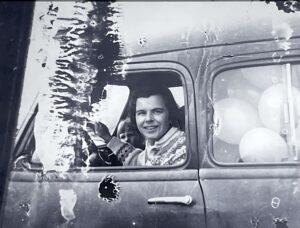
As Sloan recalled about their activist victory in the early 1960s, “to have a group of citizens win out over a major institution was really pretty unique. … Bodega was a very important story at the very beginning of a huge cultural shift for not only environmental matters on nuclear energy, but in so many other ways, too. Basically, citizen involvement at every level, from students to housewives. And to be a part of that, I look back on that and think, wow, how could anybody have been so lucky in so many ways?” The story of this citizen-led anti-nuclear activism has been told elsewhere, including in Oral History Center interviews with David Pesonen and Joel Hedgpeth, as well as by nuclear historians J. Samuel Walker and UC Berkeley alumnus Thomas Wellock. Sloan’s storytelling on her personal role in the “Battle of Bodega Head”—like launching over a thousand helium-filled balloons from Bodega Head to the accompaniment of live jazz playing “Blues Over Bodega”—adds both flourish and important details to the eventual successes of NCAPBHH.
Sloan’s involvement at Bodega Head played a crucial role in launching the next phase of her life as a geologist and teacher. After moving with her children to Berkeley in 1963, Sloan worked for the Friends Committee on Legislation, a Quaker lobbying group. Yet, by the early 1970s, Sloan’s long-standing fascination of nature, a desire to experience more of it, and her memory of discovering fault seams on Bodega Head led her to take UC Extension courses on geology taught high up in the Sierra Nevada’s Emigrant Wilderness by a remarkable UC Berkeley professor named Clyde Wahrhaftig. Wahrhaftig eventually became a significant mentor and friend to Sloan on her academic journey, as were UC Berkeley geologists Garniss Curtis and William B.N. (Bill) Berry. In her oral history, Sloan shares many joys from her field research and academic experiences at Berkeley, including mapping rock formations in California’s Mazourka Canyon, communing with ancient bristlecone pines in the White Mountains, learning about limestone deposition in Florida, a fascinating question about an imaginary dinosaur civilization from Walter Alvarez during her PhD oral examination, and her own work deciphering the sedimentary mysteries of fossils from mud under the San Francisco Bay. Sloan also shared some of the challenges she faced in the late 1970s as one of the few women in Berkeley’s geology and paleontology departments that, by her account, then included more than a few male chauvinistic dinosaurs.
Video clip from Doris Sloan’s oral history about Clyde Wahrhaftig, a UC Berkeley geologist, mentor, and friend:
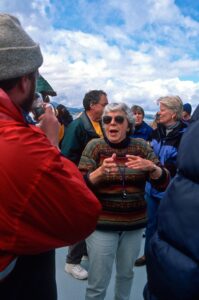
Sloan’s oral history also explores her ensuing years as a teacher, travel guide, author, and environmental activist. Sloan discussed several senior research seminars in Environmental Studies that she taught at UC Berkeley, some records of which are preserved in UC Berkeley’s Library including East Bay Parklands: Planning and Management (1978), Seismic Safety in Berkeley (1979), San Pablo Bay: An Environmental Perspective (1980), and Hazardous Substances: A Community Perspective (1984). Sloan recorded stories and samples from lectures she delivered in her UC Extension geology courses and in her field classes for numerous organizations, including the Oakland Museum, Sierra Club, the Point Reyes National Seashore Association, and the Yosemite Association. And she shared some of her travel experiences as a guide for Cal Alumni groups on journeys all across the Earth, from the Himalayas to Central Asia, and from South America to Scandinavia. Sloan also spoke about her local environmental activism as a board member of Save The Bay, as a founding member of Citizens for East Shore Parks, and on her friendship with Save The Bay co-founder Sylvia McLaughlin, including efforts to secure what is now named as McLaughlin Eastshore State Park.
Doris Sloan’s enlightening oral history records marvelous stories from the first ninety-two years of her remarkable life—from fleeing Nazi Germany to summers in Woods Hole; from raising children in northern California to stopping construction of a nuclear power plant on the San Andreas fault; from graduate school in her forties at UC Berkeley to lecturing across California and much of the world. I am honored to have become one of Doris’s friends, and I’m lucky for the opportunity to become one of her students. Now, with the publication of Doris Sloan’s oral history, you also have the chance to learn from her deep wisdom and experience.
Video clip from Doris Sloan’s oral history about the Bay Area’s complicated geology:
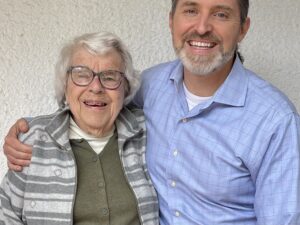
ABOUT THE ORAL HISTORY CENTER
The Oral History Center of The Bancroft Library preserves voices of people from all walks of life, with varying political perspectives, national origins, and ethnic backgrounds. We are committed to open access and our oral histories and interpretive materials are available online at no cost to scholars and the public. You can find our oral histories from the search feature on our home page. Search by name, keyword, and several other criteria. Sign up for our monthly newsletter featuring think pieces, new releases, podcasts, Q&As, and everything oral history. Access the most recent articles from our home page or go straight to our blog home.
Vincent H. Resh: Water, Insects, and Friendships, oral history release
New oral history: Vincent H. Resh
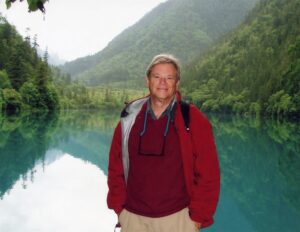
Vincent H. Resh is a world-renowned Professor of Aquatic Ecology and Entomology and an award-winning teacher at UC Berkeley whose decades of humanitarian work, research, and leadership in the Onchocerciasis Control Programme helped protect tens of millions of people from the scourge of river blindness in sub-Saharan West Africa. Resh and I recorded over twenty-eight hours of his oral history over Zoom in the first months of 2021. His fascinating, world traveling, and enlightening oral history produced a transcript over 700 pages long, including a bibliography of his publications with over 400 entries, as well as an appendix of photographs with family, friends, and colleagues.
To me, Vince Resh embodies ubuntu, a Nguni Bantu term meaning “humanity” or “the quality of being human” that functions more extensively as “humanity towards others.” Ubuntu encapsulates ideas of community and interconnection with human kindness and mutual caring. It offers an African way of seeing self-identity formed in mutual relation to one another that sometimes is explained as “I am because we are.” The ubuntu theology of Archbishop Desmond Tutu popularized the concept, especially in the 1990s when he chaired South Africa’s Truth and Reconciliation Commission during their turbulent transition to democratic majority rule. Desmond Tutu described ubuntu as something that “refers to gentleness, to compassion, to hospitality, to openness to others, to vulnerability, to be available to others and to know that you are bound up with them in the bundle of life.” Coincidentally, Vince Resh began his own life-changing and life-giving work in West Africa around that same time.
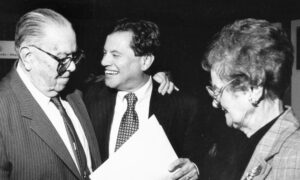
I associate Vince Resh with ubuntu for several reasons. Certainly for his decades of self-sacrificing humanitarian and ecological work in West Africa and elsewhere, but perhaps foremost for his genuine love of people. Resh has an infectious joie de vivre that shines brightest while sharing his world-spanning adventures with beloved family, friends, and fellow travelers. His explorations as an entomologist and freshwater scientist took him across the planet to examine nature’s deep and delicate interconnections. On those adventures, Resh created community everywhere he went, forging new friendships or fortifying old ones. His teaching and research provided a means to deepen bonds with people he loved most, friends and science collaborators alike, and often in the service of others. As Resh explored ways that water enables ecological interconnections, he deepened his own human relations, grew into his best self, and lifted up others in the process.
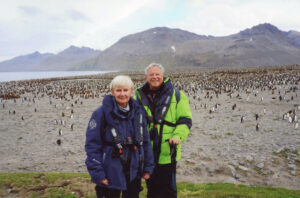
Vincent Resh was born September 1945, in Greenwich Village, New York City, and grew up in Westchester County, just north of the Bronx. He earned a B.S. from Georgetown University in 1967, a M.S. from Niagara University in 1969, and his Ph.D. in 1973 in the Water Resources Laboratory at the University of Louisville. His research examined the evolutionary ecology of aquatic insects, and he developed approaches for the biological monitoring of water quality and the control of water-borne disease vectors. Resh was an assistant professor at Ball State University from 1973 to 1975. He joined the faculty at UC Berkeley in 1975, mentored scores of graduate students, and taught over 20,000 Berkeley undergraduates from 1988 to 2011 in his General Biology course. From 1996 to 2001, Resh was Director of the Richard B. Gump South Pacific Biological Research Station on the island of Moorea in French Polynesia. From 1995 to 2009, he served on the Expert Advisory Committee and chaired the Ecological Group in the World Bank and World Health Organization’s Onchocerciasis (River Blindness) Control Programme in West Africa. From 2002 to 2012, he advised the Mekong River Commission on the effects of large Chinese dams by conducting studies throughout Southeast Asia. He was involved in many international aid projects, taught courses at universities throughout the world, lectured across all seven continents, and consulted on numerous science advisory boards and projects. Upon retiring in 2015, Resh received the Berkeley Citation, a high honor for those whose contributions to UC Berkeley go beyond the call of duty and whose achievements exceed the standards of excellence in their fields. His son Jon and stepson Jeff were born in 1970. He is married to Cheryl Resh, a former Vice Chancellor and Director of the Financial Aid and Scholarships Office at UC Berkeley who also earned the Berkeley Citation upon her retirement.

Vincent Resh’s oral history recounts his rich personal life and his prolific academic and humanitarian career. The details of Resh’s education and academic career—especially his decades of ecological monitoring and teaching for international aid projects all around the world—highlights various ways that entomological science can be used to improve the human condition, while also creating historic records of human impacts on the natural world. Resh’s oral history also reveals how social connections play a fundamental role in the scientific process of creating new knowledge. Resh regularly developed deep friendships with his many academic collaborators around the planet. He shares numerous stories from his personal relationships with his academic mentors, as well as his own legions of graduate and undergraduate students during his forty years of teaching at UC Berkeley. Resh also taught courses all over the world on the process of scientific writing and publication, much of it drawn from his experiences as a prolific author and an academic editor. From 1976 to 1998, Resh was editor of the leading academic journal Annual Review of Entomology, and he co-edited the award-winning Encyclopedia of Insects in 2003, which was awarded the “Most Outstanding Single-Volume Reference in Science” by the Association of American Publishers and “Best of Reference” by the New York Public Library and Library Journal.
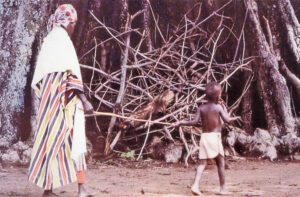
Resh’s oral history also provides details from his biomonitoring research and international service projects throughout Europe, India, Russia, Southeast Asia, the South Pacific, Central America, and North America. Resh discussed extensively his two decades of biological monitoring and decision-making as chair of the Ecological Control Group and member of the Expert Advisory Committee for the OCP, the World Health Organization’s Onchocerciasis (River Blindness) Control Programme in West Africa. The WHO and World Bank’s summary statistics of success for the OCP are astounding. Along with other program leaders, Resh’s decades of work helped protect 40 million of the poorest people on Earth from river blindness, including nearly 25 million children born in the area since the program’s start who are now free from risk of river blindness. Their work prevented an estimated 600,000 new cases of blindness across the eleven participating nations in West Africa, and some 1.5 million people who were once infected no longer experience symptoms. As a result, the OCP opened up 25 million hectares of arable land, which is enough to feed an additional 17 million people per year. Perhaps even more astounding, in order to achieve these successes, the Ecological Control Group that Resh oversaw sprayed carefully controlled pesticides on 30,000 miles of rivers over a geographic area covering over 476,000 square miles across eleven different nations in West Africa. This massive spraying was conducted nearly every week for 10-12 months each year for about 20 years, including while some of the West Africa nations were at war with each other! Resh’s participation in the OCP, or River Blindness Programme, had a profound effect on his life, his teaching, and his health—all of which he described throughout his detailed and moving oral history.
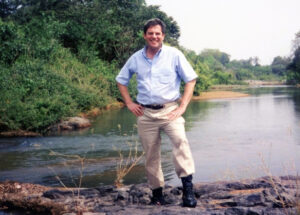
For me, Vince Resh embodies ubuntu because his life journey and the choices he made throughout his career as a teacher and as a freshwater scientist continually fostered an ethic of mutual caring and community enrichment. Theologian Michael Battle, who was ordained by Archbishop Desmond Tutu, once described a person with ubuntu as open and available to others, affirming of others, not threatened that others are able and good, for he or she has a proper self-assurance that comes from knowing that he or she belongs in a greater whole and is diminished when others are humiliated or diminished, and is elevated when others are lifted up. I had the pleasure of learning about Vince Resh’s many years of incredible service to his many communities—of scholars and learners at Berkeley, of international scientists, of fellow international aid workers in humanitarian projects around the world, and of his friends and neighbors in California’s Bay Area. And now, with the publication of his extensive oral history, you too have the opportunity to learn from and revel in Vincent H. Resh’s adventures of living and sharing ubuntu.
About the Oral History Center
The Oral History Center of The Bancroft Library preserves voices of people from all walks of life, with varying political perspectives, national origins, and ethnic backgrounds. We are committed to open access and our oral histories and interpretive materials are available online at no cost to scholars and the public. You can find our oral histories from the search feature on our home page. Search by name, keyword, and several other criteria. Sign up for our monthly newsletter featuring think pieces, new releases, podcasts, Q&As, and everything oral history. Access the most recent articles from our home page or go straight to our blog home.
Oral History Center Releases Documentary on Famed Yale Social Scientist James C. Scott
In A Field All His Own: The Life and Career of James C. Scott
“James C. Scott is regarded by many as one of the most influential thinkers of our time.”
The Oral History Center at UC Berkeley is proud to release, In A Field All His Own: The Life and Career of James C. Scott, a documentary that offers an unprecedented look at the famed Yale political scientist. Created and produced by UC Berkeley Oral History Center (OHC) historian Todd Holmes, the film draws from nearly thirty hours of oral history interviews with Scott and affiliated scholars at Yale and UC Berkeley to trace the intellectual journey of the award-winning social scientist from his childhood in New Jersey through each of the ground-breaking works he produced throughout his accomplished career. Overall, the film presents an intellectual biography of one of the world’s preeminent academics, a feature that will serve as a treasured resource for students and scholars around the globe.
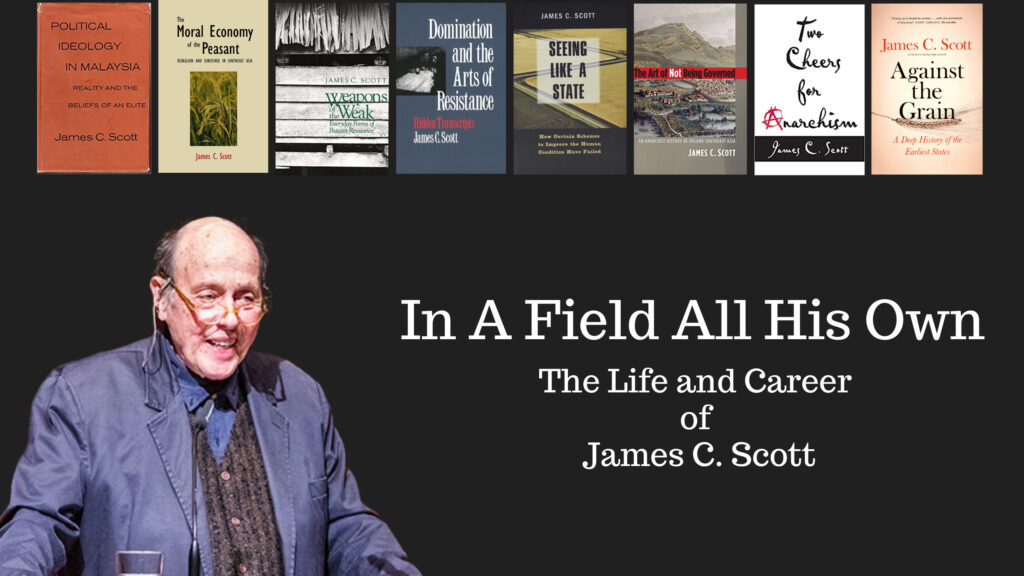
While intellectual biographies may not be a typical genre, Scott is far from a typical academic. Over the last fifty years, few scholars have achieved such prominence within the American academy as James C. Scott. The Sterling Professor of Political Science at Yale University, with appointments in anthropology and the school of forestry and environmental studies, he is regarded by many as one of the most influential thinkers of our time. Throughout his career, his scholarship became a series of major interventions that impacted dozens of disciplines across the humanities and social sciences. From the strategic rhythms of peasant life to notions of resistance and the functioning of the modern state, his work continually shaped and reshaped research agendas and discourses in the academy. By his retirement in 2022, Scott stood as one the most widely read social scientists in the world – an influence and distinction that placed him, as the film title suggests, “in a field all his own.”
The idea for the documentary developed out of the Yale Agrarian Studies Oral History Project, which Holmes conducted between 2018 and 2020. The focus of that project was to document the career of James C. Scott, as well as the thirty-year history of the renowned Yale Agrarian Studies Program he founded. Those oral history interviews, which the OHC released in 2021, served as the basis for the film. Holmes had worked for both Scott and the Agrarian Studies Program during his graduate studies at Yale. His motivation for both the project and documentary was to capture Scott’s story—in his own words—for future generations. As Holmes recalls, “I had the privilege of meeting and working with Jim Scott before ever reading Jim Scott, a unique vantage point that allowed me to develop a deep appreciation for the brilliant scholar behind the books—his limitless curiosity, his wit and humor, and the welcoming nature of his intellect. I wanted to capture these qualities in telling his story. His books will be read for generations to come; it was my hope that this film could serve as a companion and allow students and scholars to get to know James C. Scott and the inspiration behind his work.”
The film was made possible through the generous support of Yale University’s Program in Agrarian Studies, InterAsia Initiative, and Council on Southeast Asia Studies. It was produced by Todd Holmes in association with the UC Berkeley Oral History Center and Teidi Productions, a digital creations label he operates with his partner Heidi Holmes. The film is available to the public via YouTube.
About the Oral History Center
The Oral History Center of The Bancroft Library preserves voices of people from all walks of life, with varying political perspectives, national origins, and ethnic backgrounds. We are committed to open access and our oral histories and interpretive materials are available online at no cost to scholars and the public. You can find our oral histories from the search feature on our home page. Search by name, keyword, and several other criteria. Sign up for our monthly newsletter featuring think pieces, new releases, podcasts, Q&As, and everything oral history. Access the most recent articles from our home page or go straight to our blog home.
Cheryl Resh: A Life in Student Services and a Federal Direct Loan Program Advocate, oral history release
New oral history: Cheryl Resh
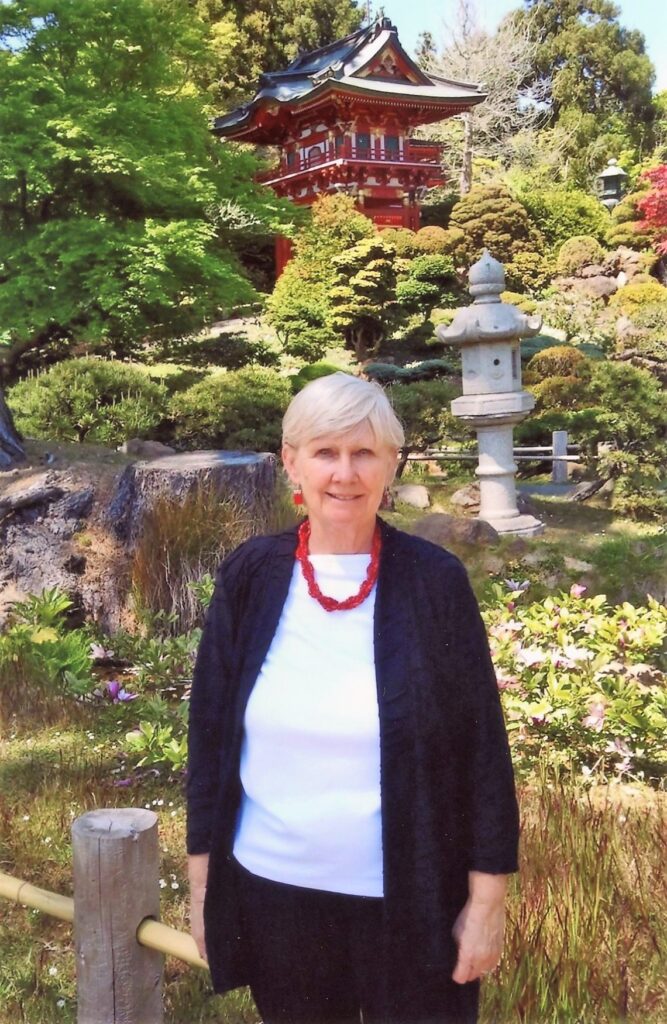
Cheryl Resh’s oral history paints an intimate portrait of family, of love, of world travel, and of her nearly four-decade career in university administration—from Resh’s first job in the early 1970s as a computer programmer at a community college in northern Illinois, to her eventually becoming Assistant Vice Chancellor and Director of the Financial Aid and Scholarships Office at UC Berkeley where she implemented new computerized financial-aid delivery systems and expanded student aid availability for low income and first-generation students. Resh also served on the Executive Council of the National Direct Student Loan Coalition from 2003 through 2011 to advocate in Washington DC for increased student aid and national expansion of the Direct Loan Program. The nation-wide transition to Direct Loans was enacted during the Obama administration in 2010, adding billions of dollars to the federal Pell Grant Program while also eliminating excessive fees for students and their families. Upon her retirement, Resh earned the Berkeley Citation, a high honor reserved for those whose contributions to UC Berkeley go beyond the call of duty and whose achievements exceed the standards of excellence in their fields.
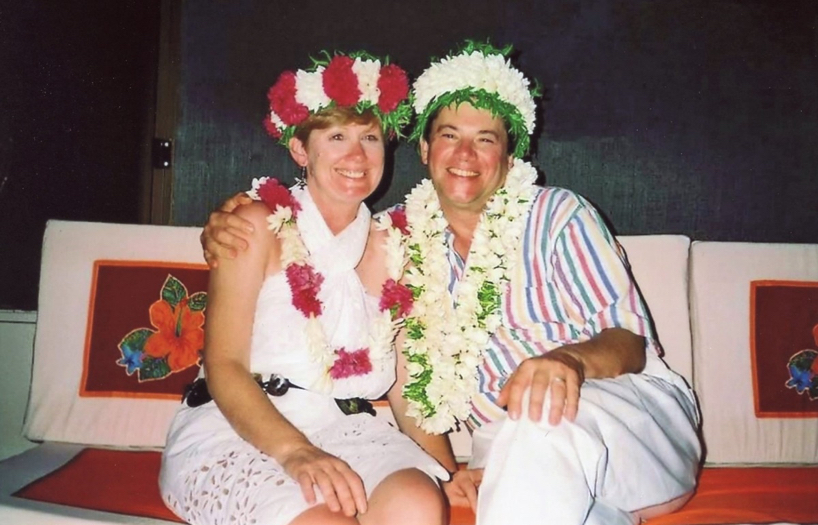
Cheryl Resh and I recorded her oral history over Zoom from January to late March 2021. Our eighteen hours of recordings produced Resh’s reflective transcript of nearly 470 pages, including an appendix of photographs with family and friends and some of her world-spanning travels. In addition to discussing details from her outstanding service to the UC Berkeley community, Resh shared tales of her parents’ lives, her own memories of childhood, her experiences of becoming a mother in 1970 and eventually a grandmother, as well as sharing the tragedy of her son’s sudden death in 2020 just a few months before recording her oral history. Resh also discussed her deep involvement in competitive horse jumping, her ownership of two horses, and her tangential connections to horse-trading activities she later learned were linked to Chicagoland organized crime. And of course, Resh shared her deep love and many adventures with her husband, Vincent H. Resh, a Professor of Aquatic Ecology and Entomology at UC Berkeley with whom she has visited every continent on Earth, including several decades of visiting the island of Moorea in French Polynesia as well as their travels on rivers and railroads across Eurasia and Africa.
Cheryl Resh’s oral history also offers unprecedented detail on the operations, computerization, and evolution from 1978 through 2011 of UC Berkeley’s student services. Her career spanned Berkeley’s transition from hand-written student records that were then transferred to key-punched cards and inserted into a mainframe Tandem computer in the late 1970s, to the development and implementation of bespoke computerized financial aid delivery systems and web-based student services systems that allowed real-time access and updating to individual student information. By the time she retired as Vice Chancellor and Director of the Financial Aid and Scholarships Office at UC Berkeley, Resh managed seventy staff members in eleven units that were responsible for the programming, processing, and delivery of $250,000,000 of student financial aid that came from 700 federal, state, institutional, and other scholarship funds that were delivered in aid packages uniquely individualized for over 25,000 undergraduate and graduate students.
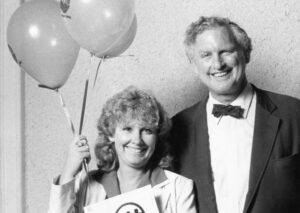
Receiving the Berkeley Citation in 2011 surprised Resh, but not her friends and colleagues, many of whom wrote letters celebrating her contributions to UC Berkeley and to students across the nation. Harry Le Grande, a Vice Chancellor at UC Berkeley’s Division of Student Affairs, reported that “Dr. Cheryl Haigh Resh has dramatically improved student aid service in an environment of rapidly escalating costs and shrinking operational resources to provide services.” Kate Jeffery, the Director of Student Financial Support in the University of California Office of the President, praised Resh for her “rare combination of technical ‘systems’ expertise together with a keen grasp of the policy and student equity implications of each feature and choice.” Jeffery noted how “Cheryl has always been particularly compassionate on a personal level with students for whom the challenge of coming to UC Berkeley was possibly the hardest.” And Roberta Johnson, the Director of Financial Aid at Iowa State University and a fellow past chair of the National Direct Student Loan Coalition, shared how Resh’s leadership on their national executive committee guided “a movement that has changed financial aid for students for the better and hopefully forever!”
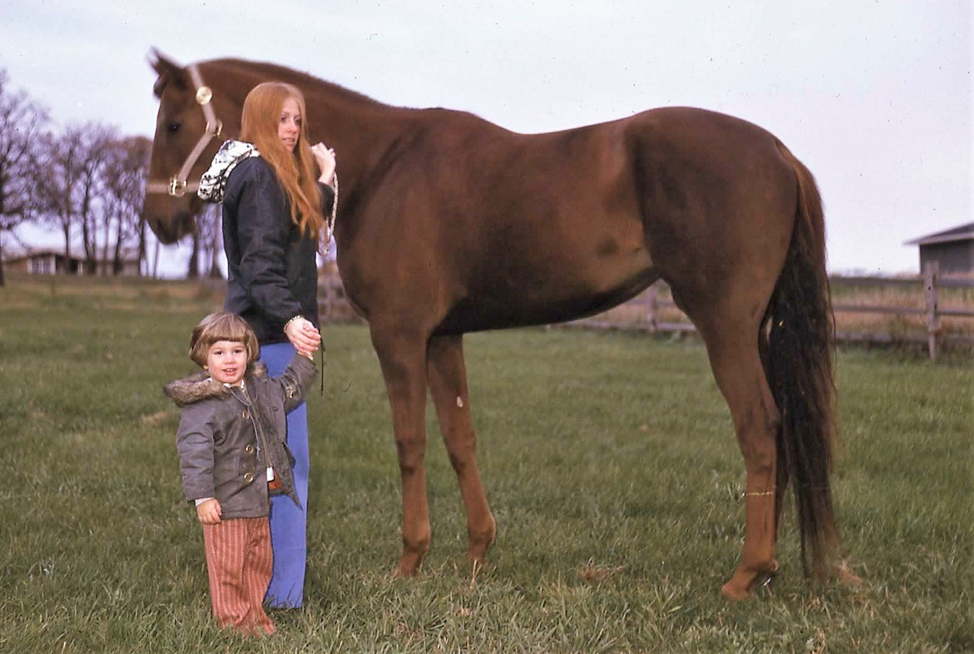
Throughout her oral history, Cheryl Resh wove together stories about her family, her personal life, and her professional life. Resh was born in September 1947, in Dubuque, Iowa, as the eldest of six siblings to their father, a Lutheran minister who spent his entire life not knowing that he was actually adopted from an orphanage by his own birth mother. In the late 1960s, Resh attended Northern Illinois University, got married, and followed her recently drafted husband to the Panama Canal Zone, where she spent a transformative year amid Panama’s military coups. In 1970, Resh’s son Jeffrey Haigh was born, and that same year, she earned her B.S. in Mathematics from Northern Illinois University. In 1972, Resh began her career in university administration as a computer programmer and soon became Assistant Director of Admissions and Records at Rock Valley College in Rockford, Illinois. In 1978, upon earning her M.S. in Higher Education Administration from the School of Business Management at Northern Illinois University, Resh bravely moved with her son from the Midwest to California as a single mother to begin work as an administrative analyst in the Office of Admissions and Records at UC Berkeley. She soon became Associate Director of Records, helped convert Berkeley from quarters to semesters, and at one point was even burned in effigy on the steps of Sproul Hall during a staff union protest over her efforts to automate the Records Office. By 1985, she and her colleagues successfully ended the era of hand-written student records by automating all major processes in Berkeley’s Admissions and Records Office. In 1986, Resh began work in Berkeley’s Financial Aid and Scholarships Office where she worked for the next twenty-five years.
From her Financial Aid office in Sproul Hall, Resh had a front-row seat on historic UC Berkeley activities, from student demonstrations against South African apartheid in the mid-1980s, to the campus controversy in the 1990s over declining Asian American admissions that re-shuffled campus policies as well as the careers of several leaders in university administration. In 1991, Resh earned her Ph.D. in Educational Administration from UC Berkeley, with emphasis in Finance, Economics, and Operations Research. At the Financial Aid Office, she helped implement computer system upgrades to the SAMS (Student Aid Management System) software from Sigma Systems, and from 2007-2010, she managed the new ProSAM computer system implementation to greatly enhance Berkeley’s financial aid delivery system and its web-based student service systems.

Resh remains rightfully proud of her many years working to implement Federal Direct Loans for students, first at UC Berkeley, and then for all students across the nation. She implemented the Direct Loan program at UC Berkeley in 1995, which greatly improved the delivery of over $100 million per year in financial aid along with long-term savings on the total cost of their loans, all while enabling enormous administrative savings for the campus. Resh also shared stories of serving from 2003 through 2011 on the Executive Council of the National Direct Student Loan Coalition. Through the National Direct Student Loan Coalition, Resh and her fellow Financial Aid Directors from universities across the nation successfully lobbied US Congressmembers to protect and expand the Direct Loan Program. The Health Care and Education Reconciliation Act of 2010 then mandated that all federal student loans be Direct Loans, which also increased student grant aid for needy American students by over $60 billion while saving significant taxpayer dollars over time.
Over Cheryl Resh’s thirty-three year career at UC Berkeley, she substantially enhanced student aid services while reducing costs, and she did this work while maintaining Berkeley’s commitment to supporting students from all economic backgrounds, especially students from the lowest income groups. Her dedication to equity of opportunity included her development of the Berkeley Cares program, which provided needed financial aid outreach and support to newly admitted low-income students, many of whom were first generation college students.
Cheryl Resh defied norms to achieve success both with and for others, all while carving a unique and adventurous path through life. I hope you enjoy reading Cheryl Resh’s oral history as much as I enjoyed working on it with her.
About the Oral History Center
The Oral History Center of The Bancroft Library preserves voices of people from all walks of life, with varying political perspectives, national origins, and ethnic backgrounds. We are committed to open access and our oral histories and interpretive materials are available online at no cost to scholars and the public. You can find our oral histories from the search feature on our home page. Search by name, keyword, and several other criteria. Sign up for our monthly newsletter featuring think pieces, new releases, podcasts, Q&As, and everything oral history. Access the most recent articles from our home page or go straight to our blog home.
Saving the Spoken Word: Audio Recording Devices in Oral History
By Serena Ingalls
Seventy-five years ago, in April 1948, Ampex began to sell the first audio tape recorder commercially to the public, the Ampex Model 200. This product, a rather large and bulky unit, was first marketed towards local and regional radio broadcasters and promised to be well worth the cost due to its utility. As time went on, audio recording technology only became less expensive, smaller, and more widely available, notably with the creation of the cassette tape by Philips. The invention of audio tape recorders made a huge mark on the world, and it impacted the daily lives of many, particularly those who spent much of their time interviewing and taking notes. In the archive of the UC Berkeley Oral History Center, there are many casual mentions of tape recorders that reveal the importance of these devices, and how people thought about and experienced the recording of interviews.
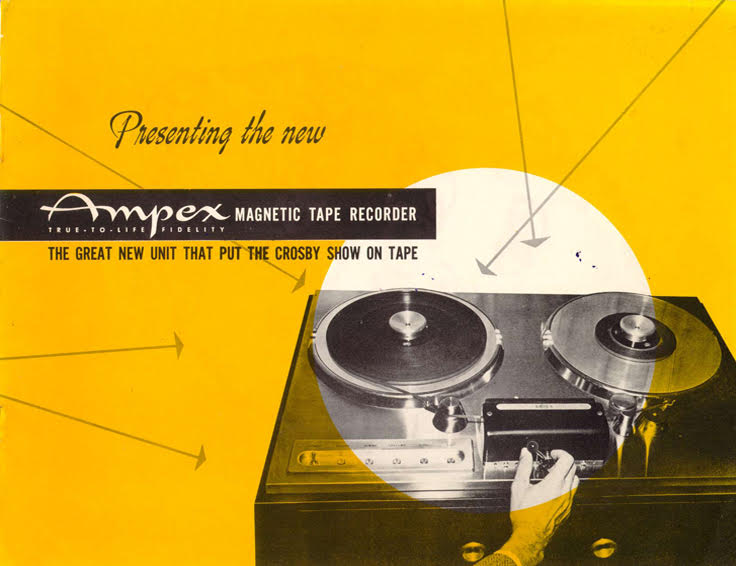
Sports journalist and UC Berkeley alum Glenn Dickey began his career before tape recorders were generally used in the field, so he became very skilled at taking shorthand notes. His ability to take notes and remember conversations verbatim was so remarkable that others doubted that he didn’t use a tape recorder. In his oral history, Dickey talks about tape recorders and reflects on a personal experience. “One time when Garry St. Jean was an assistant coach for Don Nelson, he had a bet with Don Nelson that I have a tape recorder hidden,” explained Dickey. “Because he’d be there when I was talking to Nelson, and he knew that what I was writing in the column was what Nelson said—he says, ‘He can’t remember all that.’”
“It is easy to say now that I can narrate the story of my life on a tape recorder before writing these memoirs down, but for millennia it was impossible and everything hinged upon the spoken word, and all traditions and all the knowledge gradually accumulated by humanity depended upon this knowledge.” — Alexander Paul Albov
Others took full advantage of the tape recorder as a memory aid. Jo DeJean, the personal assistant to Gary Rogers at the Dreyer’s Grand Ice Cream Company, was one such person. She recalls in her oral history that “on my ride home I would talk into a tape recorder about things that I needed to do. We didn’t have cell phones back then. Because I had all these things swimming around in my head, so I needed to record them. So that’s what I did.” This strategy is now employed by many through the means of “voice memo” features on smartphones.
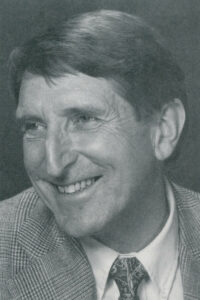
When tape recorders became inexpensive and easily accessible, they were used consistently by interviewers. Tape recorders were incredibly useful tools for longer interviews. Sometimes during the oral histories conducted by the Oral History Center, the methodology of the interviewers makes its way onto the record through the mention of tape recorders and other tools.
One interviewee, George W. Waters, former editor of Pacific Horticulture, became curious about the tape while his interview was being conducted. While chatting about interviewing techniques, Waters asked about what would become of the tape after the interview was done, and the interviewer, Suzanne Riess, replied “You can ask that the tape be destroyed, if you really wish.” This remark seemed to surprise Waters, and he replied, “Well, I appreciate the fact that somebody else has accepted the job of transcribing it. No, there are advantages and disadvantages [to using the tape recorder], and well, I wouldn’t have missed this for the world. It’s so rare, isn’t it, that one gets an opportunity to talk about himself to someone who’s actually interested in staying?”
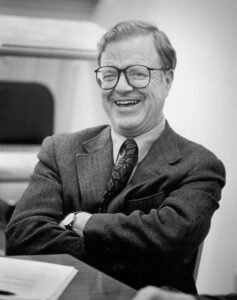
Sometimes, however, the presence of a tape recorder could create an awkward barrier between the interviewer and interviewee. Robert D. Harlan, professor of the UC Berkeley School of Librarianship (later the UC Berkeley School of Information), who also conducted oral history interviews for the Oral History Center (then the Regional Oral History Office), was asked about his experience in his own oral history. Harlan reflects that “Having been both the interviewer and the interviewee, it’s easier to be the interviewee, I think. It’s more reactive. You know, I don’t have to change the tapes and that sort of thing. [laughter]” At the same time, he recalls that one of his interviewees had difficulty in opening up because “he found the process intimidating, sticking this thing [tape recorder] in front of him, so I had to work at it. And well, you’re certainly aware of this. It can be a problem. I wish he’d been a little more forthcoming.”
Even if they sometimes initially hindered the flow of conversation between the interviewer and the interviewee, tape recorders and more modern recording devices are invaluable to the creation of oral histories. They allow for relaxed conversations that can be transcribed at a later date by someone who wasn’t present at the original interview. Recording devices and the transcripts that are produced are more accurate than one’s memory and shorthand notes as well.
More than anything, these recording devices allow us to do what we’ve always done: pass down stories of one generation to the next. Today, the Oral History Center not only records their words, but we also record videos of the narrators. This allows us to capture the sound, rhythm, and accent of someone’s voice, which will make a new viewer of an oral history video feel as though the story is being told to them directly. Although the transcripts usually contain photos of the narrator, the additional video content shows the person in motion and the nuances of their expressions. The combination of oral history transcripts and video recordings, only possible now due to advancements in technology since the first tape recording device, preserves the stories of those in our past and present for future generations. Like a fossil preserved in amber, these histories are immaculately preserved, but rather than being a gift from nature, the preservation of oral histories is a product of evolving technology — and the extensive work of all of the interviewers, transcribers, and professional and student staff of the Oral History Center.
Find these interviews and all our oral histories from the search feature on our home page. You can search by name, keyword, and several other criteria.
Serena Ingalls is a fourth year student in History and French at the University of California, Berkeley. She works at the Oral History Center as a research and editorial assistant.
Related Resources from The Bancroft Library
For sources related to athletics, see the Oral History Center’s project, Athletics at UC Berkeley. The Bancroft Library also holds several books written by Glenn Dickey, including Glenn Dickey’s 49ers : the rise, fall, and rebirth of the NFL’s greatest dynasty ; Bancroft (NRLF) ; GV956.S3 D518 2000.
For sources related to Dreyer’s ice cream, see the Oral History Center’s projects, Dreyer’s Grand Ice Cream; Food and Agriculture — Individual Interviews; and Commerce, Industry, and Labor — Individual Interviews. See also: Dreyers: history in the making. Bancroft Pamphlet Folio ; pf HD9281.U54 D7 1997.
For sources related to horticulture, see the Oral History Center’s project, Natural Resources, Land Use and Environment — Individual Interviews. See also: California’s horticultural statutes with court decisions and legal opinions relating thereto, also county ordinances relating to horticulture and list of state and county horticultural officers corrected to March 1, 1908. Bancroft ; F862.21.C2.1908. Read the Oral History Center article, “U.S. Forest Service, California Water History, and Horticulturalists in the Natural Resources, Land Use, and Environment Oral History Project,” by Ricky J. Noel.
For sources related to University History, see the Oral History Center project, Education and University of California — Individual Interviews. See also: Robert D. Harlan papers, 1947-2000. BANC MSS 2003/225 c.
About the Oral History Center
The Oral History Center of The Bancroft Library preserves voices of people from all walks of life, with varying political perspectives, national origins, and ethnic backgrounds. We are committed to open access and our oral histories and interpretive materials are available online at no cost to scholars and the public. You can find our oral histories from the search feature on our home page. Search by name, keyword, and several other criteria. Sign up for our monthly newsletter featuring think pieces, new releases, podcasts, Q&As, and everything oral history. Access the most recent articles from our home page or go straight to our blog home.